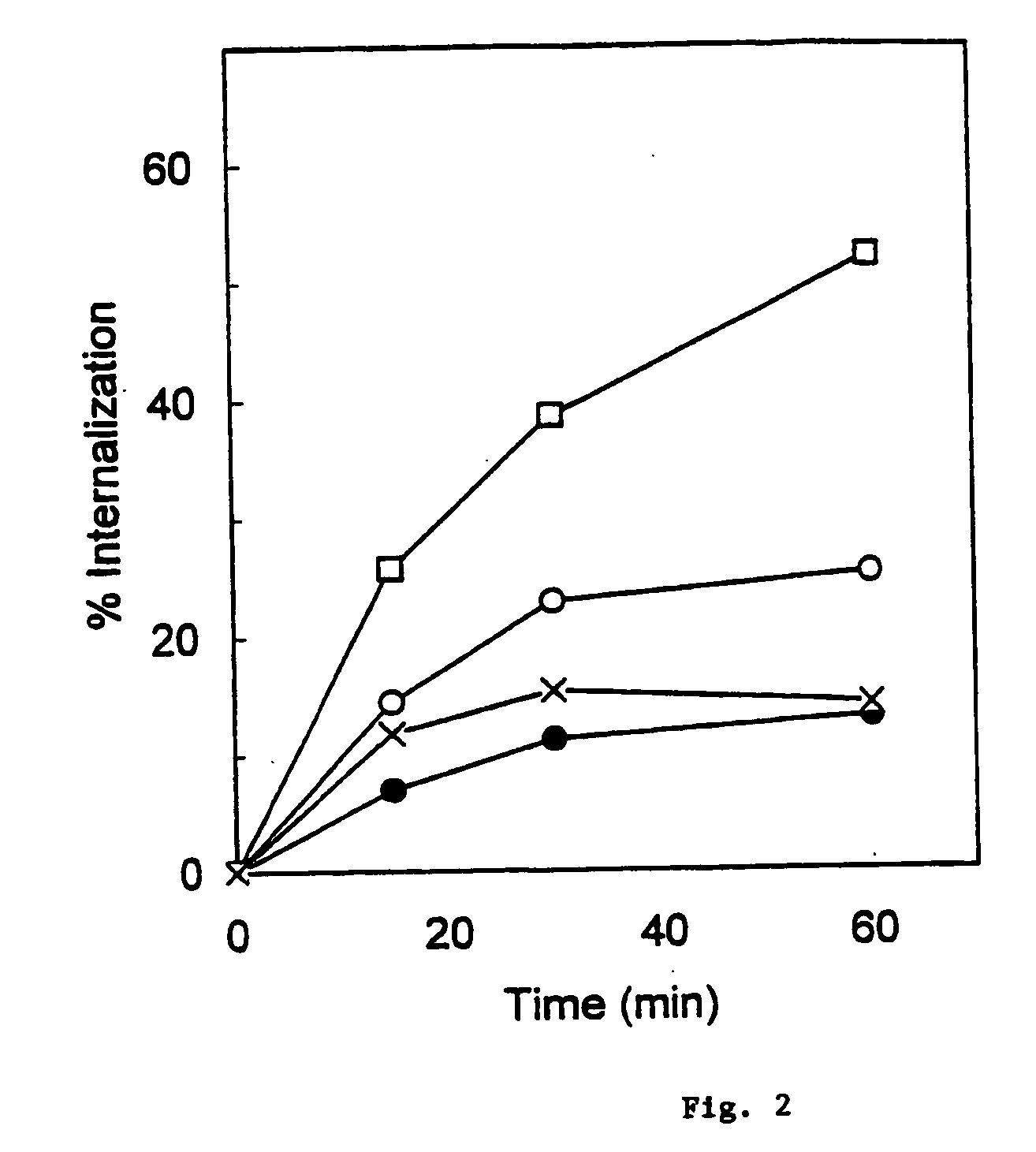Controlling availability or activity of proteins by use of protease inhibitors or receptor fragments
a technology of protease inhibitors and receptor fragments, applied in the direction of protease inhibitors, receptors for hormones, animal/human proteins, etc., can solve the problems of ineffective treatment, insufficient activation, and available surface receptors, so as to increase the hormone concentration and increase the hormonal activity
- Summary
- Abstract
- Description
- Claims
- Application Information
AI Technical Summary
Benefits of technology
Problems solved by technology
Method used
Image
Examples
Embodiment Construction
Experimental Part
[0042] Degradation of cytosolic proteins is mainly carried out by the 26S proteasome. The ubiquitin conjugation system selects and targets the proteins for proteasomal degradation by proteolytic cleavage (1). Previously, we have shown that the ubiquitin conjugation system is involved in ligand-induced endocytosis of the growth hormone receptor (GHR) (2). Here, we present direct evidence that proteasome action is required for growth hormone (GH) to be internalized by its receptor. In the presence of specific proteasome inhibitors, GH internalization was inhibited, while the transferrin receptor cycle was unaffected. Consequently, the half-life of the GHR in the presence of ligand was prolonged by proteasome inhibitors. GH uptake by a truncated GHR proceeded normally in the presence of inhibitors. Experiments with CHO cells harboring a temperature-sensitive ubiquitin-activating enzyme (E1) showed that the ubiquitin conjugating system is required before the proteasom...
PUM
| Property | Measurement | Unit |
|---|---|---|
| pH | aaaaa | aaaaa |
| temperature | aaaaa | aaaaa |
| pharmaceutical composition | aaaaa | aaaaa |
Abstract
Description
Claims
Application Information
 Login to View More
Login to View More - R&D
- Intellectual Property
- Life Sciences
- Materials
- Tech Scout
- Unparalleled Data Quality
- Higher Quality Content
- 60% Fewer Hallucinations
Browse by: Latest US Patents, China's latest patents, Technical Efficacy Thesaurus, Application Domain, Technology Topic, Popular Technical Reports.
© 2025 PatSnap. All rights reserved.Legal|Privacy policy|Modern Slavery Act Transparency Statement|Sitemap|About US| Contact US: help@patsnap.com



